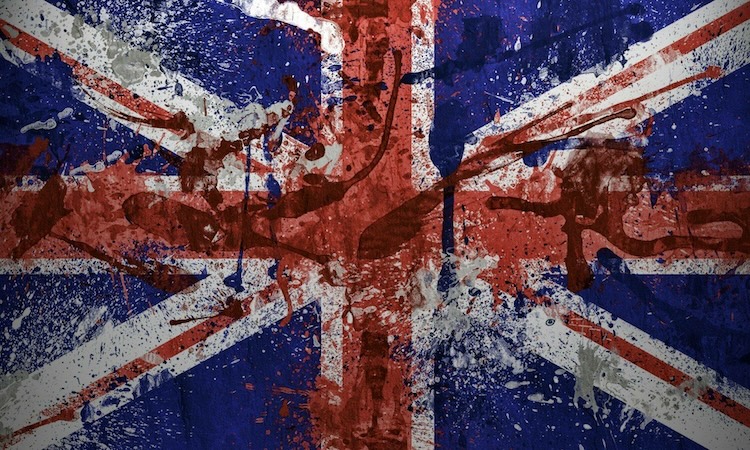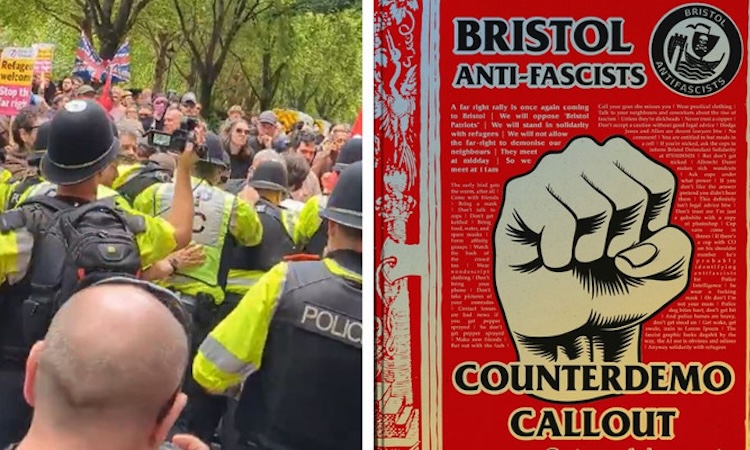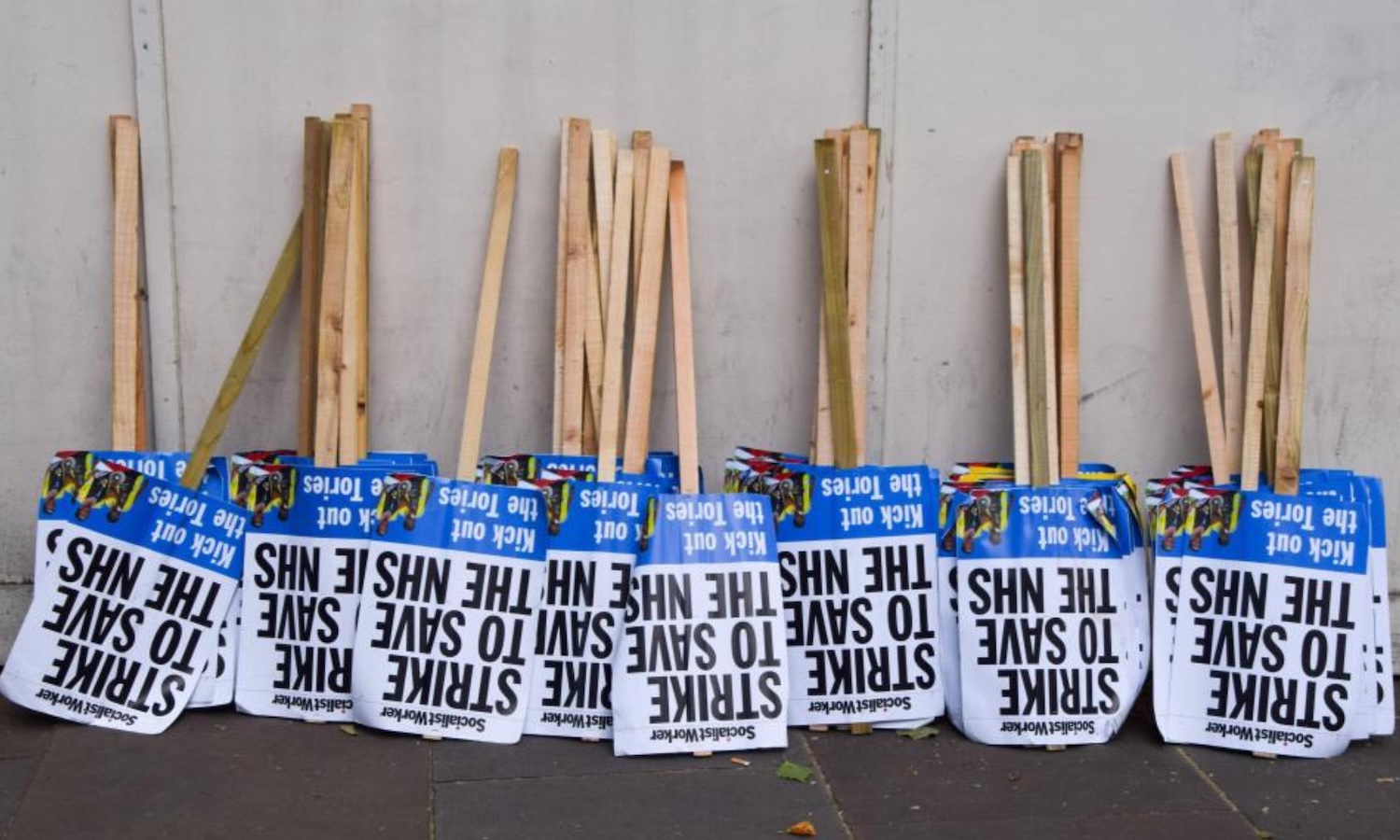The following article is the first in a series of pieces exploring both ‘woke’ and ‘anti-woke’ politics and seeking to give a materialist explanation for the origins of both and their utility to the capitalist class. It is reproduced from the Marx Engels Institute blog, with thanks.
*****
A recent controversy arose in Britain regarding the Scottish executive’s attempt to house a dangerously violent rapist in a women’s prison simply because the offender in question had now ‘identified’ as a woman. Clearly this is an absurd situation, to which anyone with an ounce of rationality would object, and it marked a breaking out into the mainstream of campaigns waged for many years by feminists against the invasion of female-only facilities and institutions by men who had tried to ‘identify’ their way into them.
The fact that a suspiciously high number of these characters had criminal convictions for acts of extreme violence against women made it clear to anyone who had eyes to see that what was going on here was an attempt by dangerous individuals to access women-only spaces by hiding behind the ‘trans rights’ campaign that has waged a successful lobbying effort over the last decade in the corridors of power.
The capitulation of the increasingly bizarre first minister of Scotland Nicola Sturgeon in the face of legitimate outrage, and the inability of politicians of all parties to speak clearly on the issue of what even makes a woman anymore (witness Keir Starmer tying himself in knots on the issue), has meant that anyone who can point out the absurdity within the British or American public sphere has found themselves elevated simply as a result of the dearth of anyone prepared to call a man a man even if he ‘identifies’ otherwise.
But gender ideology and its growth remains unexplained through all of the back and forth between its defenders and the growing number of opponents within the bourgeois public sphere.
Further afield, we find the bizarre sight of top-tier universities trying to ‘decolonise’ the curriculum of academic institutions that are finishing schools for the British and American imperial management structure. Now you can work for the US State Department or CIA and have written your PhD in ‘Decolonising American education’, or some other pseudo-Maoist title. In fact, you’ll may be headhunted by these organisations.
Arguments rage across social media platforms on the topic of ‘securing representation’ of every sexual or racial group within the next Marvel product, in which unhinged cranks on each side of the ‘debate’ all insist (for opposite reasons) that they are finding communism in the latest commodity delivered by Disney to its audience of 35-year-old man children.
That the media and entertainment landscape is a vision of hell should not come as a surprise to any actual communist of course. The long-term decay of western capitalism has produced an unprecedented consolidation of ownership in media and cultural production, leading to a uniformity of tripe churned out by these companies, who throw in some ‘diversity, in a desperate attempt to generate some interest in the visual equivalent of a meat-free burger.
Again, we come to the question of why the ‘diversity agenda’ and various shades of radical-sounding academics are finding favour with the Biden administration.
Critics from the bourgeois right wing claim that it’s all part of a campaign, long and insidious, to undermine America, Britain or France from within. To replace christian or western values with those that celebrate degeneracy, ‘anti-whiteness’ or ‘anti-Americanism’, and that this is some kind of ‘communist’ or leftist plot.
This point of view finds its expression everywhere from Fox News to the edgier world of ‘national conservative’ magazines. US senators like Josh Hawley rail against ‘woke capital’, as does 2024 presidential hopeful Governor Ron De Santis of Florida.
None of this really illuminates anything if you are seeking an answer as to where ‘wokeness’ or gender ideology have come from. Many right-wingers blame academia and claim that the university professors of the west are carrying out nefarious plots against the nation.
This is, of course, a complete fantasy, because all of these academic institutions are hardwired into US and British imperialism, and you can easily go from critiquing white supremacy to helping to sell the Azov battalion to an audience of liberals by employing Jon Stewart to do PR for them.
Academia is designed around the needs of capital and the needs of the bourgeois state. Within that framework, there exist many points of view, but these are all firmly within the narrow scope of disagreement that is acceptable to the ruling class.
‘Wokeness’ sits firmly within that scope because it is a wholly idealist set of dogmas that is, at heart, an embrace of our current hyperalienated and atomised existence. The ideas that make up what is referred to as wokeness are an extension of what is also referred to as ‘identity politics’, which have been around for many decades now and first came to popular attention in the late 1980s to early 1990s.
This first iteration was also rooted in language policing and arguments over ‘representation’, and was adopted by companies such as Benetton who wanted to portray themselves as progressive. It is no coincidence that these trends arose after the defeats inflicted upon the organised working class in the 1980s. Friedrich Engels observed as far back as 1888 that, after an earlier defeat of the working class, the proletariat had been comprehensively pushed out of politics, leaving political contests to the radical and conservative wings of bourgeoisie.
“The defeat of the Parisian insurrection of June 1848 — the first great battle between proletariat and bourgeoisie — drove again into the background, for a time, the social and political aspirations of the European working class. Thenceforth, the struggle for supremacy was, again, as it had been before the revolution of February, solely between different sections of the propertied class; the working class was reduced to a fight for political elbow-room, and to the position of extreme wing of the middle-class radicals.” (Preface to the 1888 English edition of The Communist Manifesto)
That is, in effect, what has happened here. With the generational defeat of the working class and the attempt by the ruling classes of the USA and Britain to drain politics of anything meaningful, endless arguments over representation and (ever-shifting) questions of identity represented a safe way of filling the public sphere with much sound and fury that actually signified nothing.
The appeal to the bourgeoisie of something adopting these different forms of identity or woke politics is that a section of the ruling class since the 1960s has always sought to portray itself as ‘cutting edge’. The previous facade of protestant austerity was shed under the dual influence of the cultural changes of the 1960s and the consumerist boom that came with them.
The cultural expressions that followed this in the 1970s and 1980s reflected this, with one of the routine themes of the era being that of ‘upstart’ or outsider who is often regarded as crass by the austere ‘old money’ men triumphing and gleefully trampling over the ‘old order’. But of course what you are actually watching is merely a shift in ruling-class attitudes being expressed on the cultural level.
The most crucial part of this change was the bitter class struggle that was waged across the advanced capitalist world from the middle of the 1960s to the middle of the 1980s. This stemmed from a deteriorating rate of profit in these economies, which saw the postwar boom period come to a close by the middle 60s and the ruling class go on the offensive in a major way, seeking to extend the working day, restrict pay and cut back on the concessions made to the working class in the post-1945 period.
In Britain, this led to a battle between the industrial working class and the capitalist class that concluded in 1985 with the defeat of the miners’ strike. Deindustrialisation rapidly followed as capital in the west sought more profitable areas to invest and to source manufactured goods from areas of the world where labour could be exploited at a much higher rate.
This battle also led to a shift in the way bourgeois ideology was expressed. Bourgeois politicians couldn’t simply come out and state openly their goal of restoring profitability and transferring wealth to the capitalist class. They needed to carry with them enough of the petty bourgeoisie and at least a section of the workers if they were to succeed in crushing the most organised and militant sections of the working class.
This required them to adapt, to tailor their ideological approach to the consumer society that had emerged after 1945. Both Margaret Thatcher and Ronald Reagan portrayed themselves as ‘rebels’ standing against an ‘establishment’ in which was included everything from trade union leaders to state bureaucrats to the snobbish representatives of ‘old money’.
The ideal that was presented was of a hard-striving man from the middle or working class who had got to the top via hard work and grit, overcoming the snobs, the union thugs and the damn bureaucrats. What the ruling class needed was exactly this: to carry through a series of counter reforms that would make life worse for the working class, but to do so in a way that could be perceived as its opposite, as a revolt of the ‘little guy’ against the state.
This may not have convinced the bulk of the working class, but under the system of bourgeois democracy, you don’t need to – you just need enough to give the illusion of ‘consent’.
Of course, what actually transpired was the opposite. Rather than the ‘popular capitalism’ promised by Thatcher and Reagan, there has been an accelerating consolidation of wealth into the hands of the top 10 percent of society over the last 40 years.
Reality is secondary, though. When we are talking about the origins of ‘woke’, the Thatcher and Reagan period can to be seen as being the real birth of it in this very crucial sense: that it saw the portrayal of an utterly reactionary pro-establishment anti-workers politics as being the creation of bold rebellion against the state, ‘the man’ or ‘the establishment’.
That is a crucial part of the make-up of wokeness: being able to portray deeply reactionary bourgeois ideology as its opposite. For that, these ‘rebels’ really should pay homage to the men who designed Thatcher and Reagan as political products.
Wokeness can therefore be seen as a part of modern bourgeois ideology that stems from the need of the ruling class to present safe avenues for revolt. For at least 40 years it has presented various ways in which the petty-bourgeois intelligentsia can safely ‘rebel’ whilst remaining not only firmly inside the system but also getting advanced through it.
Both ‘woke’ and ‘anti-woke’ now provide avenues for this. For the moment, the woke side has been in the lead in terms of its ability to dominate certain academic and media discourses, but this can and indeed is changing as the woke side looks ever more ridiculous.
In next week’s essay I’ll be examining how woke ideology relates to the working class, and why any serious working-class movement and any serious communist must critique and reject it.















